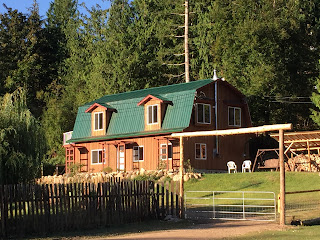I’ve invited friend, artist, and fellow writer Marilee Yeend
to share her recent essay as a guest blogger for The DayMaker.
 |
| Marilee Yeend |
Over the several years I’ve known Marilee, through writing classes I conduct in Coos Bay, I’ve observed how
her artist’s view informs her written eloquence. She read her timely piece
aloud in last week’s class, and when she finished, a collective gasp
rose from the group. Painting pictures with her words, Marilee touched us all and made us think. She’s
kindly allowed me to post her essay. Thank you, Marilee.
In the movie “Gettysburg”
there were soldiers marching in a line, going toward the enemy line of soldiers,
determined to break through. I saw in my
mind a Mondrian painting our teacher Steve showed us in Art History. It had several black lines at right angles to
each other, forming boxes. Each line
seemed to hold the others in place. In
some of the boxes there were primary colors, but they were held firmly in place
by the interconnecting lines. They had no way of escape, no where they could
go, no pathways to explore. They could not flow, could not touch another color
to form something new. A new color was
prevented from being born because they could not interact with each other from
the imprisonment in their respective cages.
Another painting
had lines also, but they seemed to be in constant motion, one flowing into
another, interacting with each other in such a way that created movement.
Rather than being static, rigid, imprisoning, there was a flow -- like a flag
blowing in the wind.
We tend to think of
lines as being hard, crisp, unyielding; one side good, one side bad. One side right, one side wrong. But upon
closer inspection they become blurred, moving, one side blending into the
other. Both sides right, both sides
wrong, both sides good, both sides bad. After much destruction, pain and loss,
with neither side the winner, the line disappears for a while to re-appear yet
again at another time, in another place, because the lines were not erased from
their minds.
We make up lines and
form boxes around our thoughts. One
thought is not allowed to interact with another thought for fear it will
destroy a belief.
I see these lines
in progression: opinion is thin and when not reinforced with many others, could
be swayed in another direction, bent, or eliminated. Judgement is a thicker line that helps hold
opinions in place, and is not easily changed.
Belief is a thick line reinforced by many opinions and judgments,
nearly impossible to change unless something very strong breaks through and
allows freedom of thought.
When will we learn
to appreciate the differences, to accept them and not feel threatened by
them? When will we learn that who we are
is not defined by what we believe? Our
safety and peace of mind do not come from everyone accepting what we find to be
true for ourselves.
Different colors
woven together in a pattern make a tapestry that the eye blends into a
beautiful whole.
 |
| Tapestry (Internet) |




